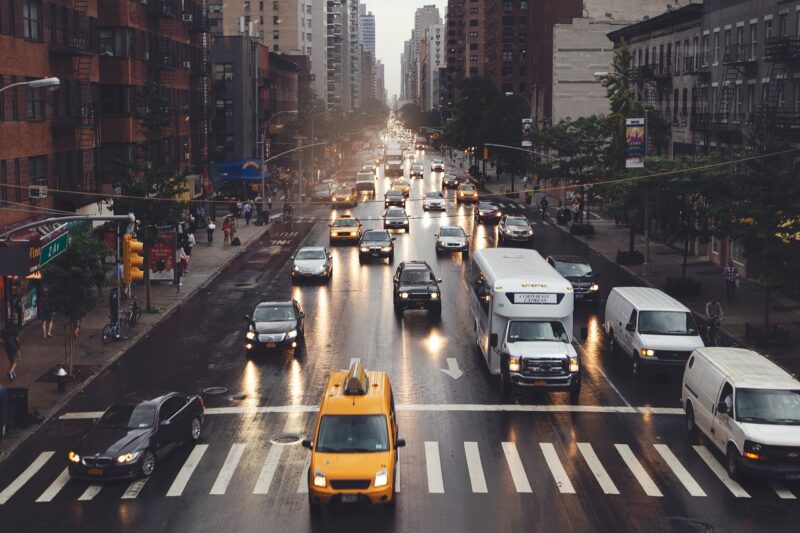How Urban Planners Are Designing Cities Without Cars for a Greener Future
November 11, 2024

In recent years, a transformative shift has begun to reshape urban landscapes across the globe. As cities grapple with the challenges of climate change, urban congestion, pollution, and the decline of public health, innovative urban planners are stepping up to design cities that prioritize the needs of people, rather than vehicles. This emerging trend of car-free urban areas presents a compelling vision for a greener, more sustainable future.
1. The Case for Car-Free Cities
As cities grow in population, the reliance on automobiles often leads to several significant problems:
- Traffic Congestion: Vehicle congestion not only slows down travel times but also contributes to increased stress and frustration for residents.
- Pollution: Cars are a leading source of air pollution, which adversely affects public health and contributes to climate change.
- Public Health Issues: High dependence on cars encourages sedentary lifestyles, leading to increased rates of obesity, heart disease, and mental health issues.
- Urban Sprawl: Car-centric planning leads to urban sprawl, consuming natural habitats and farmland, and increasing infrastructure costs.
Urban planners, motivated by these challenges, are advocating for car-free designs that embrace alternative modes of transportation, like walking, cycling, and public transit. By reducing car dependency, cities can become more inclusive, healthier, and environmentally friendly spaces.
2. Principles of Car-Free Urban Design
City planners design car-free areas with several core principles in mind, enabling residents to enjoy greater accessibility, safety, and quality of life. Here are some key tenets of car-free urban design:
- Mixed-Use Development: Car-free cities promote mixed-use spaces where residential, commercial, and recreational areas exist in close proximity. This encourages walking and cycling, reducing the need for cars.
- Safe Walking & Cycling Infrastructure: Wide sidewalks, dedicated bike lanes, and pedestrian-friendly intersections are essential in encouraging non-motorized transport and ensuring safety.
- Public Transportation Accessibility: A robust public transit system is key to providing residents with convenient alternatives to car travel, connecting them efficiently to various city points.
- Green Spaces: Parks and green corridors not only enhance urban aesthetics but also promote eco-friendliness and recreational opportunities, contributing to a city’s livability.
Implementing these principles can help cities become more vibrant, cohesive communities centered around people.
3. Case Studies of Car-Free Urban Areas
Several cities around the world have successfully adopted car-free principles, showcasing innovative urban designs:
- Copenhagen, Denmark: Known for its extensive cycling infrastructure, Copenhagen aims to be the world’s first carbon-neutral capital by 2025. The implementation of bike lanes, pedestrian zones, and car-sharing programs has made it one of the most bike-friendly cities globally.
- Barcelona, Spain: Through the “Superblock” initiative, Barcelona has transformed urban blocks into pedestrian-friendly spaces, limiting car access and creating open areas for public activities, parks, and social interactions.
- Ghent, Belgium: In a move towards sustainable mobility, Ghent has restricted car access in the city center. This has resulted in reduced pollution levels and increased foot traffic in commercial areas, leading to greater local business prosperity.
- Tokyo, Japan: Tokyo has developed a comprehensive transit system and pedestrian-friendly urban landscape that significantly minimizes reliance on vehicles, while also maximizing public transport efficiency.
These successful examples demonstrate the potential benefits of car-free urban design, providing other cities a roadmap to a greener future.
4. Technological Innovations Supporting Car-Free Design
In addition to urban design principles, technology plays a vital role in enabling car-free cities:
- Smart Public Transportation: Intelligent transportation systems use data to optimize routes, schedules, and real-time updates, making public transit more efficient and user-friendly.
- Mobility as a Service (MaaS): This approach integrates various transport modes into a single accessible service, allowing users to plan and pay for their journey seamlessly, without needing a personal vehicle.
- Electric and Shared Mobility Solutions: Electric scooters, bike-sharing programs, and ride-sharing services offer additional options for quick and eco-friendly travel within urban areas, complementing public transit networks.
Through the integration of these technologies, cities can enhance mobility and further reduce reliance on personal vehicles.
5. Challenges and Considerations
Transitioning to car-free cities is not without its challenges:
- Cultural Resistance: Many people have long-standing habits centered around car use, which can make the transition difficult. Education and positive messaging are essential to gain public support for these initiatives.
- Initial Infrastructure Costs: Building the necessary infrastructure for pedestrian-friendly and public transit systems may require significant investment upfront, which can be a barrier for municipalities with budget constraints.
- Ensuring Accessibility: It is crucial that car-free designs also consider those with disabilities and others who may rely on vehicles due to health or economic factors, ensuring equity in the urban design process.
Despite these challenges, numerous cities are taking significant strides towards implementing car-free designs, demonstrating a commitment to creating healthier, greener living environments.
6. Conclusion: A Vision for the Future
As urban planners continue to innovate and imagine car-free cities, they pave the way for a future where urban environments prioritize sustainability, community well-being, and public health. Designing cities without cars is not merely a trend; it embodies a critical movement towards a world in which urban areas thrive in harmony with the environment. By integrating thoughtful urban design principles, technology, and a commitment to accessibility, we can move towards greener, more resilient cities that ultimately enhance the quality of life for all residents.
Urban planners stand at the forefront of this transformative shift, and together, they can help build a sustainable future worth striving for—one where cities are designed for people and not just for cars.






